The Hottest Hit On The Planet…

It’s “19” by Paul Hardcastle!
How exactly did a song like this – “19” by Paul Hardcastle – become a hit?
- How exactly does a song like this – a documentary about the Vietnam War and its continued psychological impact on veterans, set to a sick beat – conquer the world?
- How does it get to Number One in Austria, Belgium, Ireland, Italy, Netherlands, New Zealand, Norway, South Africa, Sweden, Switzerland, the UK, West Germany… but not in Australia, where there had already been a Number One song a couple of years earlier, with a very different approach to the very same statistical fact!
“19” even reached No.15 on the Billboard Hot 100.

Higher than anybody could have reasonably expected, as the smart money was saying that radio stations would consider it anti-American and refuse to play it. Turns out the smart money was wrong:
The week it was No.15 on ‘Sales,’ “19” was No.19 on ‘Airplay.’ It may not have been wholeheartedly embraced by radio, but it wasn’t being shafted, either.
Still, how does a song like this become a world wide smash? Was it because the voice over reminded people of The A-Team?
Escaping to the Los Angeles underground, and surviving as soldiers of fortune, was one potential aftermath to fighting in the Vietnam War.
Others – according to the “lyrics” of “19” – include an arrest rate almost twice that of non-veterans of the same age. Also:

How does Paul Hardcastle account for this:
“In World War II the average age of the combat soldier was 26. In Vietnam he was 19”

How old was that again, Paul?
“N‑n‑n‑n‑nineteen… n‑n‑n‑n‑nineteen”

These facts, and that voiceover, comes from a documentary called Vietnam Requiem.
Paul saw Vietnam Requiem listed in the TV Guide. He thought it sounded interesting.
He had one of those new-fangled VCR thingies, so he recorded it. When he got round to watching it, he was struck by the fact that the average age of the soldiers was 19, an age when he was out partying every night. He also “couldn’t believe that anyone could be made to go through hell like they did and then get treated like they were aliens or something when they got home.”
So Paul did what any 20-something dude would do when faced with a horrid historical truth: he started playing around with the audio on his sampler…

(An Emu Emulator, if you must know…)
…playing around with the voice-over, putting together a sick beat.
The voice-over in Vietnam Requiem was performed by Peter Thomas:

Quite a big name in voice-over circles.
Much to Paul’s surprise, he’d have to pay Peter royalties. He hadn’t even considered that possibility. He was just some dude mucking about on his synthesizer. And it was the 80s; James Brown couldn’t copyright the “Funky Drummer Break” yet, but apparently, you could copyright the news?
Okay, Paul Hardcastle wasn’t quite just some dude.

Paul was already something of a hot thing in electro circles, having already had a bit of a hit with “Rainforest.”
Which doesn’t sound like a rainforest at all – but rather more like Afrika Bambaataa. (Although given that Paul would later have a career in chilled-out jazz, maybe he was more influenced by Herbie Hancock’s “Rock It”… there was a lot of this stuff around at the time)… and…
Have you ever seen a video more 80s than this?
And look, I don’t know why the video to a song called “Rainforest” is set in outer space either, just roll with it, okay…
Usually, a song like “19” would never have a chance of being a proper chart hit, even if Paul had had a minor hit before.
But it was the 10th Anniversary of the end of the Vietnam War. Not that Paul would have known that. Paul didn’t know anything about the Vietnam War. The facts found within the lyrics of “19” were the sum-total of everything about the Vietnam War that Paul knew.

But television news shows knew, and they were doing features on it.
And since they needed a new angle each night, “19” got caught up in the daily news cycle. They were talking about the record on the nightly news.
The fate of Vietnam veterans is a serious issue, and “19” was a novel means of raising awareness about it.
But it’s also more than just a little bit tacky. The stuttering “n‑n‑n‑n‑nineteen” “n‑n‑n‑n‑nineteen” – as best as I can tell, Paul didn’t mean to make it sound like a machine gun, but it does – turned the song into a bit of a joke at my primary school, whilst the tuneless vocals in the middle isn’t doing anyone any favours.
Those vocals are by a session singer and quiz show hostess:

Janice Hoyte. The first West Indian quiz show hostess in the UK, apparently.
Paul appears to have just handed her the clunkiest of lyrics:
“All those who remember the war,
they won’t forget what they’ve seen
Destruction of men in their prime,
Whose average age was nineteen”
Honestly, the Europop poets covered below have a better feel for the English language than that.
And he asked her to just make a up a melody. She did the best she could, but it sure ain’t great. Not only does her part take away from the seriousness of the message, it takes away from the brutality of the beat!
Ultimately, “19” is an historically important record.

A “preview of so much of the techno and acid house that was still a few years away from taking over the UK and European charts” historically important event.
And it’s always nice to have a weird record at the top of the charts.
It’s just a pity it wasn’t a better weird record.
“19” is a 5.
Meanwhile, in Europop Land:

It’s “Tarzan Boy” by Baltimora
Europop: what a thing.
An entire continent producing the cheesiest music known to man.
An entire continent where – perhaps due to a distinct lack of baseball games – disco never died but continued to unfurl until it reached its illogical conclusion.

An entire continent full of novelty songs, quite often sung in English, despite their creators, just as often, only having a passing familiarity with the language.
As fitting for a continent of novelty songs, Europop artists found novel ways of getting around that whole “not really having a handle on the English language” thing. And one of the more novel ideas was to sing a chorus that contained no English words at all.
- That contained no words in any known language.
- That might not even be able to be accurately described as singing at all.
- To base the chorus of their big hit single on a Tarzan yodel.
Oh-Oh-Oh-Oh-Oh-Oh-Oh-Oh-Oh-Oh-Oh!!!!
Clearly, “Tarzan Boy” is one of those songs where the cover is far, far better than the original.
Jimmy McShane, the front man of Baltimora, an Italo-Disco group – Italo-Disco being the most Europop of all Europop sub-genres – was actually from Derry.
He was a confusing lad.

Virtually every single promotional photo of Jimmy features him sporting the nerdiest of all glasses.
As if he were Rick Moranis. Or Thomas Dolby. Or whoever the guy was in Electric Dreams (the movie, not the soundtrack to…)
And having viewed multiple television performances of “Tarzan Boy” I can tell you:

He liked to take his shirt off a lot!
But possibly because it’s impossible to dance the way Jimmy did whilst wearing glasses, barely a single live – or, since this is Europop we are talking about, mimed performance – features them. Without the glasses, Jimmy looks an anorexic Frankenstein – the monster, not the mad scientist who made the monster.
Meaning that kids would have had to watch Baltimora on TV, looking a vampire or something.

And then go to the store to look for a record that looks like this.
So how does a boy from Derry end up as the face of the 80s most successful Italo-Disco act?
And I say “the face” because there are persistent rumors that it’s not actually Jimmy singing, that it’s yet another Europop miming farce, although, if you were going to get someone to mime surely you could do better than this guy?
Jimmy had been kicking around Europe for years, initially in Munich where he played the role of a robot in Dee D. Jackson’s 1978 hit “Automatic Lover.”
Dee. D wasn’t German herself. She, like her robot lover Jimmy, was British. Her real name was Deidre. Whilst both Dee. D and Jimmy were in Munich they hung out with people who hung out with people who hung out with Giorgio Moroder.

But they don’t appear to have ever worked with the great man.
Instead, Jimmy headed off to Giorgio’s mother country, Italy.
Specifically to Milan, where he met Maurizio Bassi, the man who produced Baltimora, wrote the songs and – allegedly – sung them. And then promptly disappeared. Nobody has seen him since. Or at least not made any records. The man is a complete mystery.
If you are wondering if Baltimora have any connections to Baltimore, they did, sort of.

Jimmy claims that he got a map of the U.S.A., closed his eyes and pointed his finger at it.
So, pretty much the Bay City Rollers technique of band-naming then. They then added the A at the end to make it sound more Italian. Mama-Mia!!!
Curiously enough, Jane – from the Tarzan adventures – comes from Baltimore, so they could have used that as their origin story. But that would have required them to do far more research, and put far more thought into the whole enterprise, than it appears that they did.

Baltimora was, after all, an act put together in order to make a song where the chorus is nothing but a great big Tarzan yodel!!!
That is not a criticism: the Tarzan yodel is the best part of “Tarzan Boy.”
The Tarzan yodel on “Tarzan Boy” is HUGE!!! The disco drums pounding under that Tarzan yodel are HUGE!!! At certain points you can hear some sort of jungle animal – A lion? An elephant? A chimpanzee? – Tarzan Boy’s only friends as he plays hide-and-seek, rushing ‘cross the forest, monkey business, on a sunny afternoon! It’s the cheesiest moment of the entire 80s and therefore the best!
There’s no way you could possibly follow up something as momentous as “Tarzan Boy.” You’d be a fool to even try.
Baltimora tried.
Moving on from Tarzan, Baltimora found another fictional character with a signature sound. They found Woody Woodpecker, the inspiration for “Woody Boogie.” This feels like a considerable step down. And it was. It wasn’t a hit.
“Tarzan Boy” is an 8.
Meanwhile, in Madonna Land…

It’s “Into The Groove”, by Madonna
Madonna was The Queen Of Pop. Madonna was also a dancer.
But Madonna was a very different kind of dancer to The King Of Pop.
Whilst Michael busted out robotic, jerky moves, virtually impossible for mere mortals to replicate, Madonna just threw herself onto the dancefloor. All you needed was a complete and utter lack of inhibition and you, too, could be Madonna.
“Into The Groove” is Madonna’s manifesto on the topic of dancing:

So much does Madonna love to dance that, late at night, she locks the door, so nobody can see.

Just like millions of her teenage fans.
Except that Madonna was now a grown adult woman. And yet still she was dancing in her bedroom. Other than the idea that there’s ever a moment that Madonna doesn’t want people to be watching her, I think I believe it.
Madonna could bust out professional dance moves when she felt like it. But when I think of Madonna dancing:
- I think of her throwing herself into the screen in “Ray Of Light”
- Dancing like no-one was watching but the burning crosses on “Like A Prayer”
- Endangering herself on a gondola on “Like A Virgin,”
- Or showing off her arm pits in a club whilst dancing to “Into The Groove” in Desperately Seeking Susan.
Madonna’s armpits play a key supporting role in Desperately Seeking Susan.

In what is probably the movie’s most iconic moment, Madonna dries her armpits with a public toilet hand-drier.
Such are the lengths you must resort to when you live your life as a carefree nomadic boho-punk named Susan.
“Into The Groove” was the hit song from – although not, it appears on the soundtrack to – Desperately Seeking Susan.

In which Madonna plays… well, technically she’s playing Susan, but it would probably be more accurate to say she’s playing Madonna herself.
She’s definitely playing a character who dresses a lot like Madonna. Teenage girls who had been trying to master the Madonna-look based on a selection of three-or-four-minute music videos, now had an entire movie to inspire them.
It only makes sense then that the other major character in “Desperately Seeking Susan” is a bored suburban housewife by the name of Roberta who is also attempting to master the Madonna-look, even going as far as to stalk her and buy the jacket that Madonna just sold at a thrift store. A jacket that used to belong to Jimi Hendrix. Or so she says.
Also to bump her head, get amnesia, and consequently truly believe she is Madonna. Later she bumps her head again and realizes that she’s just a suburban yuppie housewife by the name of Roberta. That must’ve hurt.
“Desperately Seeking Susan” needed a song to be played in a club, a club full of quintessential 80s freaks… Madonna/Susan is hanging out at such a club because she told Roberta’s husband to meet her there. Roberta’s husband does not look comfortable.
The version of “Into The Groove” playing in the club was a demo.
Before they used it for “Desperately Seeking Susan” the plan was to give it to a teenager named Cheyne, who was enough of a big deal at the time that her single, “Call Me Mr Telephone”, had gone Number One on the Billboard Hot Dance Play chart.
It’s not great. I think we can agree that a Cheyne version of “Into The Groove” would likewise have not been very good.
As appropriate for a song being played in an underground club frequented by quintessential 80s freaks, the groove of “Into The Groove” goes hard.
Snares whack, synths stutter and jerk… “Into The Groove” goes harder than any other major hit of the mid-80s. ‘Major American hit,’ anyway. Although it was re-recorded for the official release, it still feels like a demo. It still feels raw.

Maybe this was because Madonna put it together with her ex-, Stephen Bray.
Who had been a drummer in one of Madonna’s early 80s punk bands. Actually in two of them:
He’d been in The Breakfast Club – since this was the early 80s this was before The Breakfast Club – replacing Madonna herself on the drums when she moved to vocals.

And he’d been in Emmy And The Emmys.
Here they are with “Hothouse Flower.” It wasn’t a hit.
Another reason why “Into The Groove” might feel raw, lyrically-speaking at least, is that Madonna was in a hurry.
She had other things on her mind. I’ll give you one guess what that one thing was:

“When I was writing it, I was sitting in a fourth-floor walk-up on Avenue-B, and there was this gorgeous Puerto Rican boy sitting across from me that I wanted to go out on a date with, and I just wanted to get the song over with.”
That makes sense… Madonna was rushing to finish writing a song about losing her inhibitions, because she wants to go right ahead and lose her inhibitions.

It must be exciting to be Madonna. No wonder Roberta wanted to be her.
“Into The Groove:” Madonna’s best groove. It’s Madonna at her bratty baby chipmunked best.
And “Into The Groove” is a 10.
Meanwhile, In Purple Land:

“Raspberry Beret” by Prince
Look at that suit. That cloud suit.
I need that suit.
I probably wouldn’t be able 2 squeeze into it, even though I am kind of short… it doesn’t matter.

Obtaining the “Raspberry Beret” Cloud Suit is my life’s mission.

Prince had many fabulous outfits over the course of his career.
Of course, he’s also committed a whole lot of fashion crimes. Sometimes it’s hard 2 figure out which is which…

But that was the kind of decade the 80s were.
But of all of those outfits, nothing compares 2 the “Raspberry Beret” Cloud Suit. With the Purple Rain Ruffles underneath – just so we can recognize that it’s him.
Prince has also released a lot of great videos, or at least a lot of great performance videos in which Prince’s comedic facial expression game is on point.

Prince has the best facial expressions.
The “Raspberry Beret” video on the other hand, what with the animation, what with the dancing-clapping crowd, what with Prince having a little cough at the beginning because he’s such a fragile little thing, and – most critically…

What with the cutest roadie I have ever seen (Jackie Swanson, you may know her from Cheers)… is operating on a whole other level.
All of which is in the service of Prince telling us the story of how he lost his virginity.
It appears 2 have been a success. They may say that the first time ain’t the greatest, but Prince wouldn’t change a stroke etc. The “Raspberry Beret” girl herself was quite a bit more experienced at this sort of thing: she may not have been 2 bright, but Prince knew, when he kissed her, that she knew how 2 get her kicks.
“Raspberry Beret” also happens 2 B Prince’s greatest pop moment.
There may B funkier Prince songs, but there is no Prince song that is more POP!

And the most G-rated of Prince’s song where he basically writes a letter to Penthouse: “I know a lot of U won’t believe this but it’s completely true…”
Prince has written a lot of those songs. Songs where Prince is just minding his own business, not bothering anyone, walking down the street, when suddenly he meets a virgin, on her way 2 B wed, but Prince is such a hunk, so full of spunk, she’ll…
“Raspberry Beret” was originally written in 1982, so about the same time as the similarly themed “Little Red Corvette.”
Prince certainly had sex on his mind a lot at the time. Here he is talking 2 Melody Maker in 1981:

“I saw an analyst once…”
(presumedly referring 2 that shrink in Beverly Hills, U know the 1: ‘Dr. Everything’ll-B-All-Right’)…
“… because I was wondering why I was so sexual-minded… He asked me 2 talk about my childhood U’know, ’when U first experienced this and first experienced that?’ I realised that, when I was young, I used 2 read my mother’s dirty novels and I was more taken with them than anything – it was a lot better than comic books.”
This makes perfect sense, right? Prince’s sex songs sound exactly how U would expect a sex song 2 sound when the author spent his teenage years reading his mother’s dirty novels.
“Raspberry Beret” may B about Prince losing his virginity, but it’s almost certainly not based on a true story.
We can say that with confidence, because Prince never worked part time at a five-and-dime.

Prince never had regular job at all!
Despite this lack of real-life experience, Prince manages to capture the frustration of the daily low-wage grind, complete with a possibly racist boss by the name of Mr McGee. “He told me several times that he didn’t like my kind”? Hmmmm….
Things start 2 look up 4 Prince however, when sees a girl walking in through the out-door (the out-door) and after some preliminary filthy flirting – she asks Prince if he plans 2 do her any harm – Prince puts her on the back of his bike, and they go riding – this has suddenly turned into a scene from Purple Rain – and they do it in a barn.

With the horses wondering who they are R.
Despite the fact that it’s an overcast day, and overcast days, don’t turn Prince on – it’s rather comforting, I suppose, 2 learn that there is at least one thing in this world that doesn’t turn Prince on – but it’s okay, because something ‘about the clouds and her mixed’, and what does that even mean? What R U going on about, Prince?
Anyway, despite being an even more accessible single than anything on Purple Rain, “Raspberry Beret” belongs to Around The World In A Day:

An album that seems 2 have been designed with the single-minded purpose of destroying his career.
Now, most pop stars wanting 2 walk away from fame, would do just that… but this is Prince, and he still had a whole bunch of songs that he wanted the world 2 hear. So he gave these songs 2 the world in the most confusing way possible. First he announced that he wasn’t going 2 tour anymore – possibly 4 only a short while, possibly forever – because he was going “2 look 4 the ladder.”

If anyone asked what the hell that meant, Prince’d just answer “sometimes it snows in April.”
Um… okay Prince.
So then Prince releases the album but doesn’t release a lead single!
Radio stations didn’t know what 2 do! What song should they B playing? U would think that “Raspberry Beret” was the obvious pick, but it took a while 4 there 2 B a common consensus.
- Should it be “America”?
Some thought it a little 2 political, and not in a cool way. There’s this one verse where Prince condemns some kid called Jimmy Nothin’, who refused to make the Pledge Of Allegiance, 2 a life living on a mushroom cloud. It’s sometimes easy 2 forget – what with his wearing of high heels and all – that Prince was a big Reagan fan.
- Should it be the hippy-dippy “Paisley Park”?
- Or the anti-drug “Pop Life”?
They were all solid pop choices, but Around The World In A Day is not exactly remembered 4 being an album full of solid pop choices. It’s more remembered 4 being one of the great derailing-your-career-by-following-up-your-blockbuster-with-something-willfully-weird albums of all time.
Prince’s In Utero, if U will.
It would probably have that reputation even without the stubbornly difficult release schedule.
Eventually, Prince put radio programmers out of their misery and released “Raspberry Beret” 4 real.
I remain unsure if that was the plan all along – that he’d string radio along 4 about month or so, but then eventually release a single – or whether it was a game of chicken, and Prince finally blinked.
All of this confusing not-releasing-a-single, and then finally-releasing-a-single tomfoolery is the only conceivable reason for “Raspberry Beret” failing to go Number One:

Stuck behind Duran Duran’s James Bond theme song “A View To A Kill.”
“Raspberry Beret” is a 10.
Hmmm… it makes me think:
Where have all the raspberry women gone?
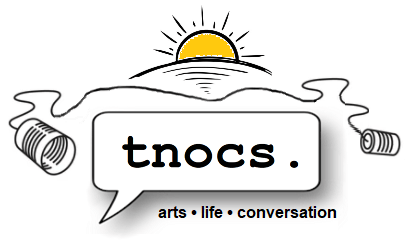
Let the author know that you liked their article with a “Green Thumb” Upvote!





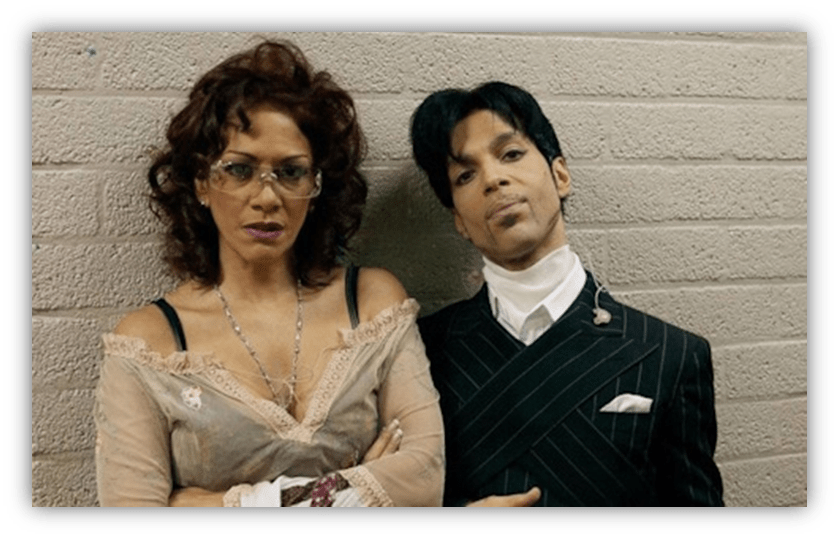

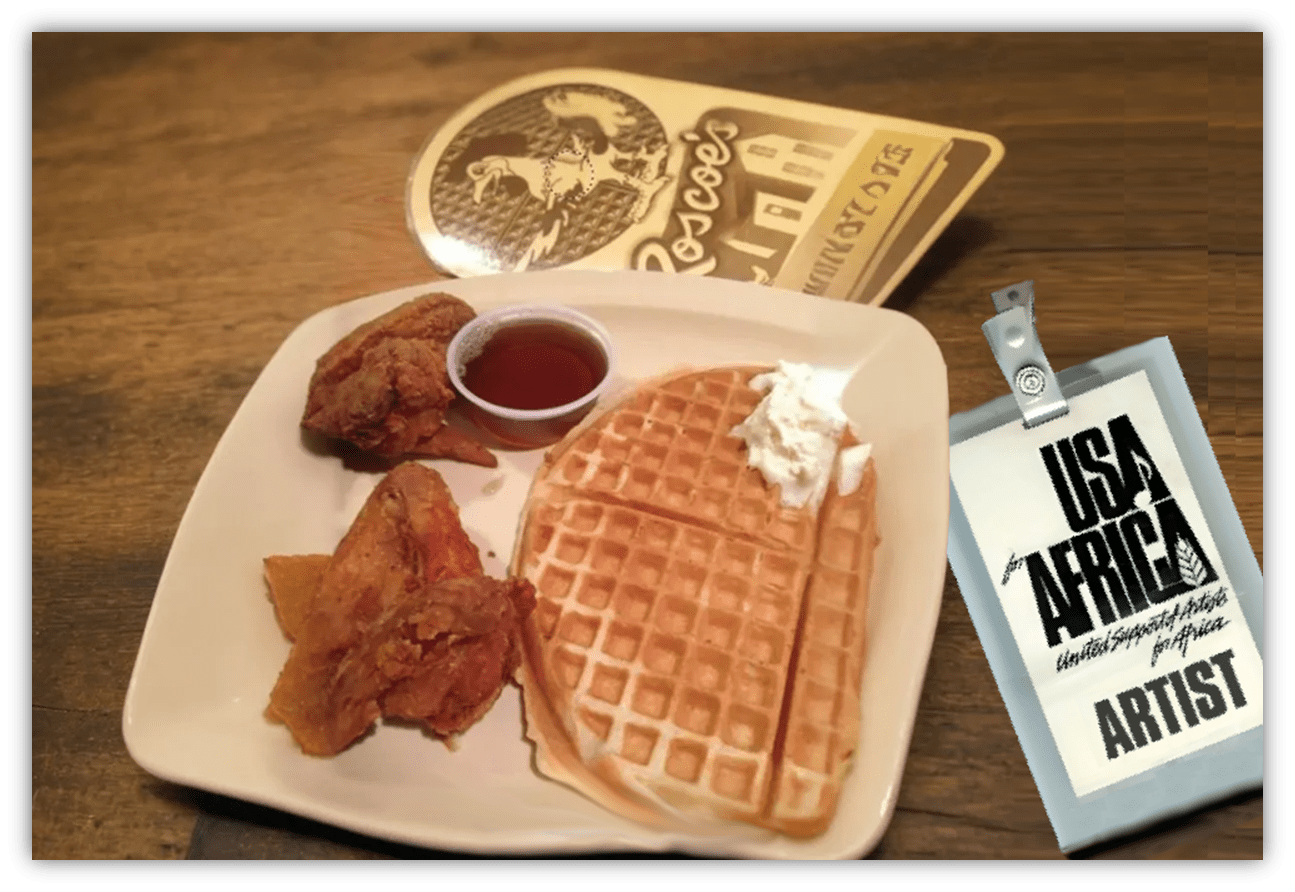
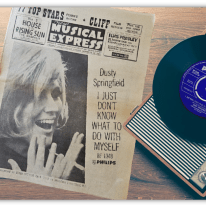
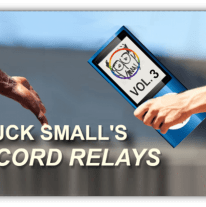
Did you know that Lee Greenwood had other hits besides “God Bless the USA”? In July of 1985 one of those forgotten songs topped the country charts.
https://www.youtube.com/watch?v=DV79YI38hYA
I remember this one. I saw Lee Greenwood live once. On the 4th of July, 1987. You can imagine what song he ended with. He put on a decent show. But I was there to see the two other artists…Restless Heart and my favorite, Steve Wariner.
Yes, he had many country hits, going back to ’81. I was forced to listen to a lot of country music in the early 80s as a teen working at a newspaper delivery agency, as that was what the adults had on the radio and they were usually in charge of it. I remember a few of his hits, particularly this one, that sounds a bit like yacht rock in retrospect
https://www.youtube.com/watch?v=XRrm-fBXiEY
This might be my favorite piece of yours yet, DJPD, even if 1985 weren’t my college graduation year. So much to choose from, where do we start?
Of course, I co-sign the 10s for “Raspberry Beret” and “Into the Groove,” even if the latter shamelessly rips off, er, evokes Shannon’s “Let the Music Play” of a year earlier. (I’ll never forget watching a band in Bloomington cover “Let the Music Play” and slide right “Into the Groove” without missing a beat. Great times.)
“Tarzan Boy” is what I’d call a gay club 10. That is, if you’re in a gay club when it busts out (as I was in the early ’90s when it made its comeback), it’s a 10 in the moment, like so many of the men dancing to it. But then, when the euphoria wears off, you realize it’s a 6 or 7 or 8 (and so too that guy). Let’s settle on 7.
And, if anything, your 5 for n-n-n-n-19 seems generous. “Tacky” is the perfect summation. I wasn’t yet going to clubs in 1985, but I suspect that would have put me off the floor in a heartbeat.
“Tarzan Boy” is weird…somehow I completely missed that song at the time. A time when I knew most songs that were out. It wasn’t till I got married and Mrs. Crawford introduced me to the song. (I wasn’t overly impressed).
I love “Tarzan Boy”
I mean, you could do worse.
I do not recall “19”, but I was not listening to the radio at all in 1985. Listening now, it may not be the best piece of music, but I have a ton of respect and admiration for it. By 1985, there was a concerted effort to forget about the Vietnam War, for the most part leaving it behind altogether or somehow redefining it in Rambo terms. Reagan and co were spinning it as a failure of the government to give the troops a chance at victory and using it as a way of saying we needed to beef up our military prowess. Movies like Platoon and Full Metal Jacket would serve as harsh reminders of the horrors of that war and the damage war in general does to those who serve, but they were a year or two away, and Apocalypse Now and The Deer Hunter were long in the rear view mirror. This song may have been the only voice in popular culture crying out in the wilderness at that particular time and for that reason, I salute it, and to me, its musical value is irrelevant.
I basically agree with all of your other ratings, DPJD.
19 was educational. I was 9 and I’m pretty sure it was the first time I’d even heard of the Vietnam war. The stuttering effect and beats helped it stand out and the serious narration sink in.
At the time: Tarzan Boy > 19 > Into The Groove > Raspberry Beret
Now: Raspberry Beret > Tarzan Boy > Into The Groove > 19
Though there’s not a lot in it. Could easily switch them round and be happy.
I don’t remember “19” at all from ’85. When I got my first British number ones book, that was one of the mystery songs that was a hit there but drew a complete blank from me. I probably would have thought it was goofy if I’d heard it 40 years ago but as an adult, there’s really nothing funny about the subject and I give it credit for touching the then–third rail of Vietnam.
“Into the Groove” is a diamond-hard 10. It’s Madonna in one of her most inspired moments, with a poetic take on both lust and dance and how they intersect. “Only when I’m dancing can I feel this free” could sum up her career. It’s great because of its immediacy: she needs you right now. Madonna recorded this, as you mentioned, as a quick demo and it was so raw they could hear the traffic outside their apartment in the recording. She also ad-libbed the “Now I know you’re mine!”, one of her greatest pop moments, which caused jaws to drop while they were recording.
“Into the Groove” should have been a single in the US but I guess they didn’t want to flood the market with Madonna (it hit number 1 in the UK). It’s unfairly overshadowed its A-side, “Angel,” one of my favorite Madonna songs. I don’t think most people remember that song—she’s never anthologized it and hasn’t performed it in 40 years—but it’s a gorgeous swirl of joy that always makes me smile.
“Raspberry Beret” always makes me smile and it’s a perfect 10, a summer day without a cloud in the sky. It’s definitely one of Prince’s best moments of pure pop. Around the World in a Day isn’t very good except for this song, “Pop Life” and “America” and their B-sides. I don’t mind having a “lesser” release after albums as monumental as 1999 and Purple Rain. Prince would be back to album form in 1986 and ’87.
Into the Groove was kept from being an official single release in the US due to a dispute between Madonna’s record label and the company issuing the song. Without a single release, it didn’t meet Billboard’s chart criteria at the time to get onto the Hot 100. But trust me from someone who was there, the airplay on it alone was huge at the time and easily would’ve made it top 10 without any sales involved.
I don’t remember listening to “19” and judging it as a song. I was a few years too young to have contemporaries lost to the war, but I had contemporaries who had lost siblings and cousins. I also knew several vets who had returned with mental and emotional problems. So, for me, it was less a song than a gut punch. A powerful one.
I should have added that the Viet Nam war was a constant of my childhood. I knew it was sad and wrong, but it seemed like something for the adults. Even when the war ended, I was a young teen, and the soldiers seemed to belong to that “grown-up” world. When this song came out, I was in my mid-twenties, and I realized exactly how young they really were.
I’d hesitate to use the word “truth” in any description of the lyrical content of “19”. Almost no reputable sources agree that the average age of infantrymen was as low as 19. The consensus suggests the average was 22-23, which was similar to the average American infantryman in WWII.
I remember hearing the sonorous voice of Peter Thomas a lot during documentaries and commercials during the 1970s through 1990s at least but didn’t realize until now that it was the same guy heard on “19.” I do remember seeing him onscreen one time, and as the picture in this blog indicates, the way he looked is nowhere near the imposing vision I expected from him based on his audio work.
The summer of ’85 was a hot one, both meteorologically and musically. I’d just moved to San Antonio a few months before, for a new job (my first “real”, career-oriented job). These songs, and many more, meant a whole lot to me that summer, as I enjoyed living my life in a new city. Memorable times!
Prince’s cryptic “sometimes it snows in April” would turn into a 7 minute song for Under the Cherry Moon in 1986. https://www.youtube.com/watch?v=ikZgBhSMSUM